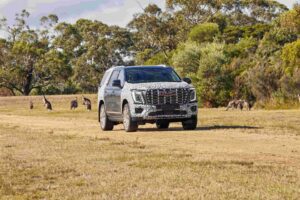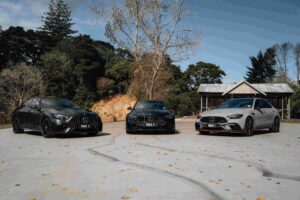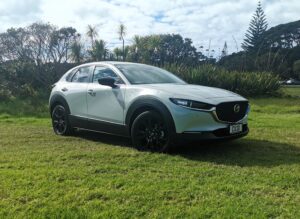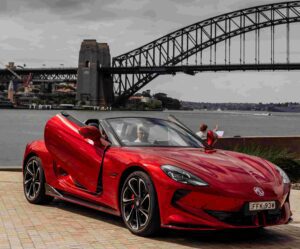As you may or may not know, my learning to ride a motorcycle has been a long and often arduous mission. Being slightly elevated in years has made me cautious and considerate of my brittle bones. That being said, when I have taken the Yamaha out of the garage (sunny days only) I have learned a lot, both about my own lack of skills and how other drivers treat bikes (on the whole quite well).
Anyway, my friends at Passmasters suggested that it was high time I used their professional tuition via registering for the ACC Ride Forever program (Bronze). Promoted as a full-day course, it’s ideal for riders on a Learner licence or those on a Class 6 Restricted licence riding LAMS-approved machines and only $20 (seriously) – It sounded like a bit of me.
 I awoke to an overcast and drizzly day and normally I would simply roll over and get some more shut-eye; but this weekend was different, I had school to go to. We met at a party room in McDonalds but as I found out, there was to be no happy meal. With coffee underway, the tight-knit group of seven of us (1 trainer/6 students), with bike skills and ages as varied as the Mc’D’s menu, discussed our reasons for being there. A few had opted for a motorcycle as a preferred method of commuting (it is quicker, cheaper and far more efficient), so it was traffic skills that were required, some were getting back on a bike after a long stretch off, so re-acquaintance/bad habit removal training was necessary and some were using the course as an evaluation for the restricted licence – Me? I was searching for my hard to find bike skills and definitely more confidence.
I awoke to an overcast and drizzly day and normally I would simply roll over and get some more shut-eye; but this weekend was different, I had school to go to. We met at a party room in McDonalds but as I found out, there was to be no happy meal. With coffee underway, the tight-knit group of seven of us (1 trainer/6 students), with bike skills and ages as varied as the Mc’D’s menu, discussed our reasons for being there. A few had opted for a motorcycle as a preferred method of commuting (it is quicker, cheaper and far more efficient), so it was traffic skills that were required, some were getting back on a bike after a long stretch off, so re-acquaintance/bad habit removal training was necessary and some were using the course as an evaluation for the restricted licence – Me? I was searching for my hard to find bike skills and definitely more confidence.
Our course leader for the day (Phil) made us feel at ease straight away as he explained what the Bronze course was about, namely giving us a sound understanding of road positioning, speed management, progression (keeping up with traffic flow) and stability/smoothness. But first; we had to address the elephant in the room – no not me.


Motorcycles make up less than 5 per cent of all vehicles on the road but 15 per cent of all fatal crashes involve motorcycle riders, and motorcyclists now make up 10% of all road users injured. Let me put this another way. Crash statistics from the Ministry of Transport show that motorcyclists are 21 times more likely to be killed or severely injured in a crash than a person driving a car. Motorcycling is growing in popularity, but with more riders comes the potential for more accidents. In one year 43 riders died as the result of a motorcycle crash with over a thousand being injured, costing $104million in ACC claims (you can see why ACC are subsidising this program) “The disturbing feature of these deaths is that the majority involve male riders all over the age of 40,” GULP.
With us left in no doubt that motorcycle riding certainly has its fair share of pitfalls, it made the relevance of this course that much more important.
Clothing check was next up on the to do list, commencing with helmets. Motorcycle helmets have a shelf life of around 5 years/7 years from manufacture (these times vary when googled) but realistically, if you do have an accident, you want all your protection to be in the best condition/most modern/most tech advanced as possible. Also, Passmasters recommended as bright colours as possible ‘be seen’ was actually the theme of the day. Bike leathers (jacket AND trousers) were also recommended (with abrasion resistance of over 4 seconds around knees, elbows, hips and shoulders). Boots are ideal and without ‘chain snagging’ laces. Most of this was common sense, but how many of us have seen cool motorbike riders wearing shorts and a T? Now think about should they come off and slide down the tarmac at speed, for me 4 seconds isn’t long enough – I asked if bubble wrap would look out of place over leather!
Next was a thorough Bike Check (indicators, lights, oil etc) again pretty much what you’d expect but be aware of tyre pressure, it can change quickly and with dramatic effect.

Finally it was time to hit the road, figuratively speaking. But not before learning lane division. For Bronze we were told to separate our lane into three. Position 1 is the third nearest the kerb, 2 being centre of the left lane and 3 being nearer the centre ‘white’ line. This is something we became very adroit with over the course of the day, as Phil’s voice called out numbers via an earpiece radio.
We headed to an industrial area for braking and close turning exercises. I am (or had been) an avid user of the front brake (with the back one being an afterthought), which I now know is wrong. After a 30 & 50kp/h display of using only front or back brake, stability and shorter braking distances result when using both (still with more bias to the front). Slow and tight turn manoeuvring is achieved via higher revs, slipping the clutch like a madman (very alien to me being a car driver) and back brake control. Each exercise ended with a debrief.
 Then came MILO, no we weren’t having a hot chocolate break. MILO (Mirror, Indicate, Look Over) is riding skill acronym that needs to be ingrained in all your motorcycle psyche. When crossing lanes or turning corners, first check your mirror, indicate, then turn your head to check the lane/way you are moving, and finally look Over the completed manoeuvre – make sure nothing has changed in terms of other road users and that your indicator is off. The head-turning thing is all important, your helmet is bigger than your indicator and in many ways more noticeable to motorists than a yellow flash (so make a big deal of it).
Then came MILO, no we weren’t having a hot chocolate break. MILO (Mirror, Indicate, Look Over) is riding skill acronym that needs to be ingrained in all your motorcycle psyche. When crossing lanes or turning corners, first check your mirror, indicate, then turn your head to check the lane/way you are moving, and finally look Over the completed manoeuvre – make sure nothing has changed in terms of other road users and that your indicator is off. The head-turning thing is all important, your helmet is bigger than your indicator and in many ways more noticeable to motorists than a yellow flash (so make a big deal of it).
With the hustle and bustle of the city diminishing in the bike’s mirrors we made for the freedom and twisties of the rural roads and in turn, cornering tips. Cornering on a bike is about positioning, where you look and taking the turns in the right speed/gear. It sounds like a lot to think about but it’s easier to do than say. Forget ‘racing lines’ visibility is king, which comes from correct positioning. Braking and gear selection should be done way before the corner and you should start the corner where you can see the furthest round (position 1 on a right hander/3 on a left), apex with room and only throttle on exit and when you are safe to. After the debrief, Phil told us about countersteering.

The best way to lean your motorcycle for a corner is to use a technique called ‘countersteering’. As you approach a bend, look in the direction you want to go, and briefly and gently apply light forward pressure on the handlebar on the side you are looking towards. Needless to say, I found this difficult.
Put it all together – With Phil’s voice inside my head, we headed off to Hunua falls on a run that consisted of ‘Position 1, MILO left, Position 3, MILO right, T junctions, Corners, Traffic lights and Regroups to catch up – mainly for me.’
The rest stop at the falls was a good chance to stretch the legs and refocus, we spent a little while discussing the ride and any issues that we may have encountered (I had a few but was feeling much better). It was then a long ride back to base for a final debrief.
As expected, I’m slow (or shall we call it cautious) but as I just said, it was all starting to click and 8 hours/100km’s of supervised riding boosted my morale. It may sound obvious but learning to ride a motorbike is all about bike time, time in the saddle and time on the road. However as I found out, it’s too easy to fall into the trap of practising your own mistakes. The ACC Ride forever course is a MUST HAVE in your toolkit and seriously what do you have to lose? Worst case you get to go on a group ride for the day and get a certificate and a badge, but I’m certain you’ll get way more from it than you’d expect. I enjoyed it so much that I will be going back to do the Bronze ride again, thanks Phil/Passmasters, see you soon!
Never miss a post – Subscribe now










